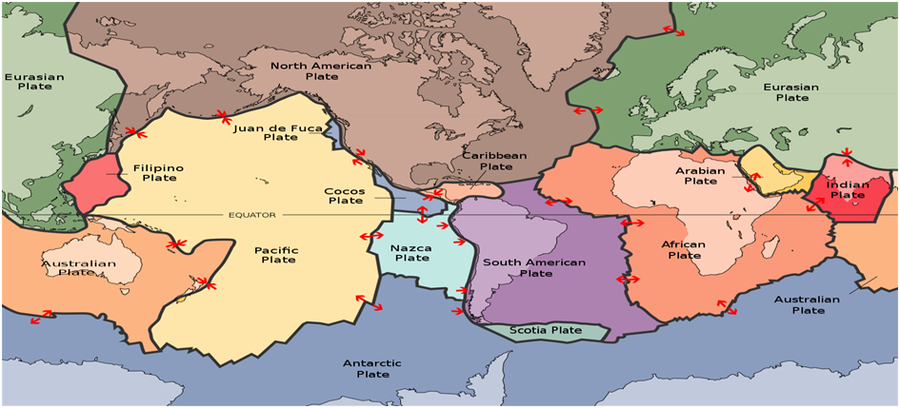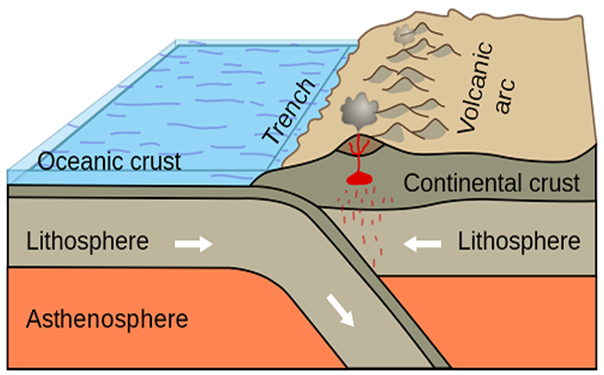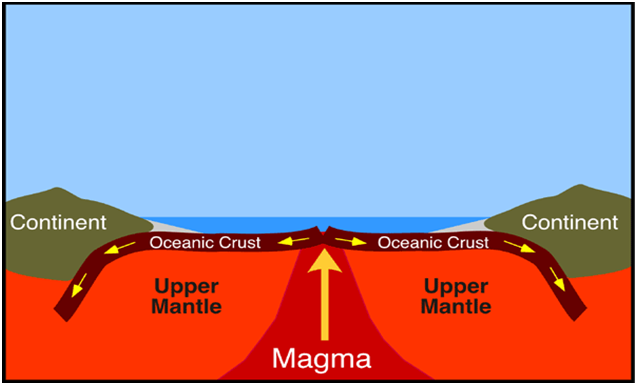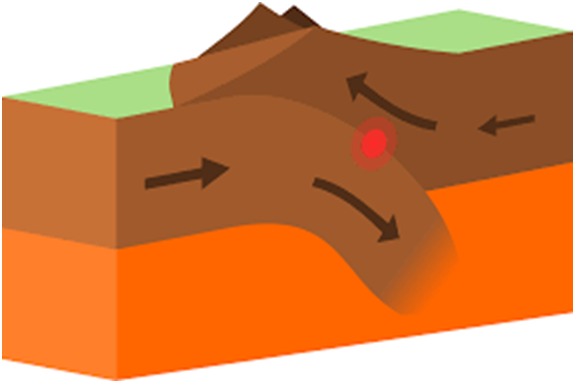Mains Daily Question
Jan. 24, 2022
What do you understand by the term “Tectonic Plates”? Discuss the different plate boundaries interactions with relevant examples.
Tectonic plates are pieces of Earth's crust and uppermost mantle, together referred to as the lithosphere. The plates consist of two principal types of material: oceanic crust (sima) and continental crust (sial).
These plates lie on top of a partially molten layer of rock called the asthenosphere. Due to the convection of the asthenosphere and lithosphere, the plates move relative to each other.
Plate Boundaries:
There are three types of plate boundaries on the basis of direction of movement of plates.
- Divergent Boundary:
In this, the plates move away from each other leading to sea floor spreading and coming out of magma. Here, new crust is formed and hence it is also called constructive boundary.
Example: Mid oceanic ridge in Atlantic Ocean.
- Convergent Boundary:
In this, two plates collide against each other leading to destruction of Earth’s crust. The collision may be between continental plate or oceanic plates or both.When two continental plates collide, it forms towering mountain ranges like Himalaya.
In case of oceanic- continental collision, there is subduction of lighter oceanic plate leading to formation of chain of volcanoes.
- Transform Boundary:
At such boundary, two plates slip pass each other horizontally. Such interaction result in earthquake in the region. For Example, San Andreas Fault, which is responsible for many of California’s earthquakes.
Plate boundaries are important because they are often associated with earthquakes and volcanoes. The activity along the plate margins helps us understand and predict the nature and timing of events like earthquake, volcano and tsunami.





